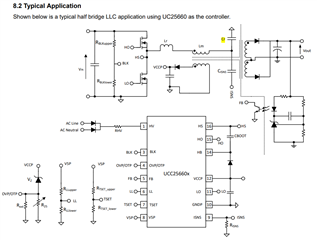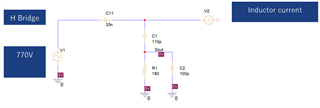Other Parts Discussed in Thread: UCC25600,
Tool/software:
Hi all,
My customer has a question.
When turn-on, ISNS pin's current exceeds the absolutely value and the device stops by OCP.
Is the value wrong? If there is any way to suppress the fluctuation, please let me know.
[Each value] (refers to the circuit diagram below)
Vin=770V, Vout=14.4V/600W
Lr=85uH
Lm=510uH
C=0.03uF
CISNS=110pF
RISNS=180Ω

Best Regards,
Ryusuke



